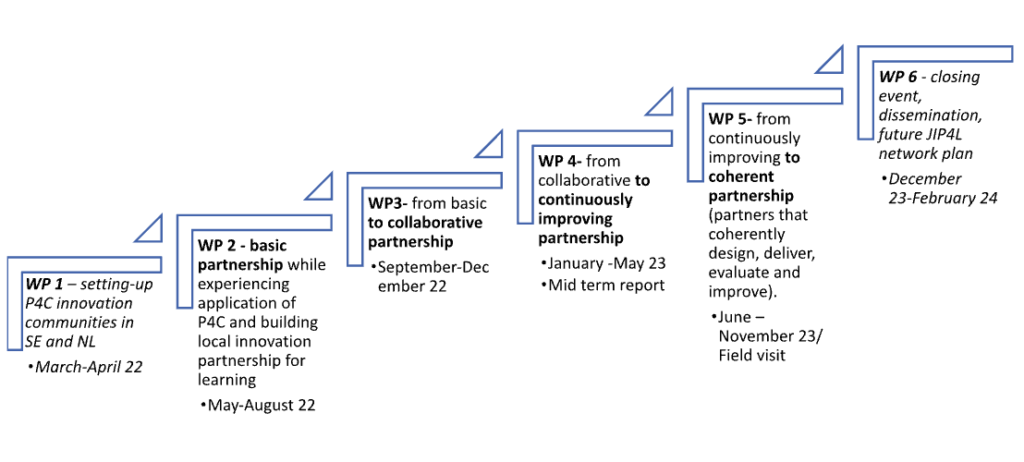Partnership Continuum Model
In complex school environment with growing diversity, top-down leadership (e.g. buying external service providers for a short term) rarely improve capacity building among school professionals with regard to pupils participation and belonging. Instead, deeper partnerships between complementary professionals (e.g. teacher and occupational therapist), ones that jointly observe, reflect and act in the context for improving the learning journey, participation and belonging of all children, is warranted.
The JIP4L has been inspired by the Partnership Continuum model (Toon & Jensen, 2017) including the following types of collaboration: 1. Setting-up P4C innovation communities (WP1); 2. Basic partnerships, while experiencing application of P4C and building local innovation partnership for learning (WP2); 3. Collaborative partnerships (WP3), in which partners hold structured meetings that involve sharing experiences about the P4C application; 4. Continuously improving partnerships (WP4), in which partners collaborate on joint P4C projects; and 5. Coherent partnership (WP5), in which partners design, deliver, evaluate and improve the P4C approach. School system standards, motivations, and supports are all important in helping these partnerships to be deep, coherent, and continuously improving.
The JIP4L between the Netherlands and Sweden followed the process as described in the Figure 1.
Figure 1: The P4C- Partnership Continuum model

